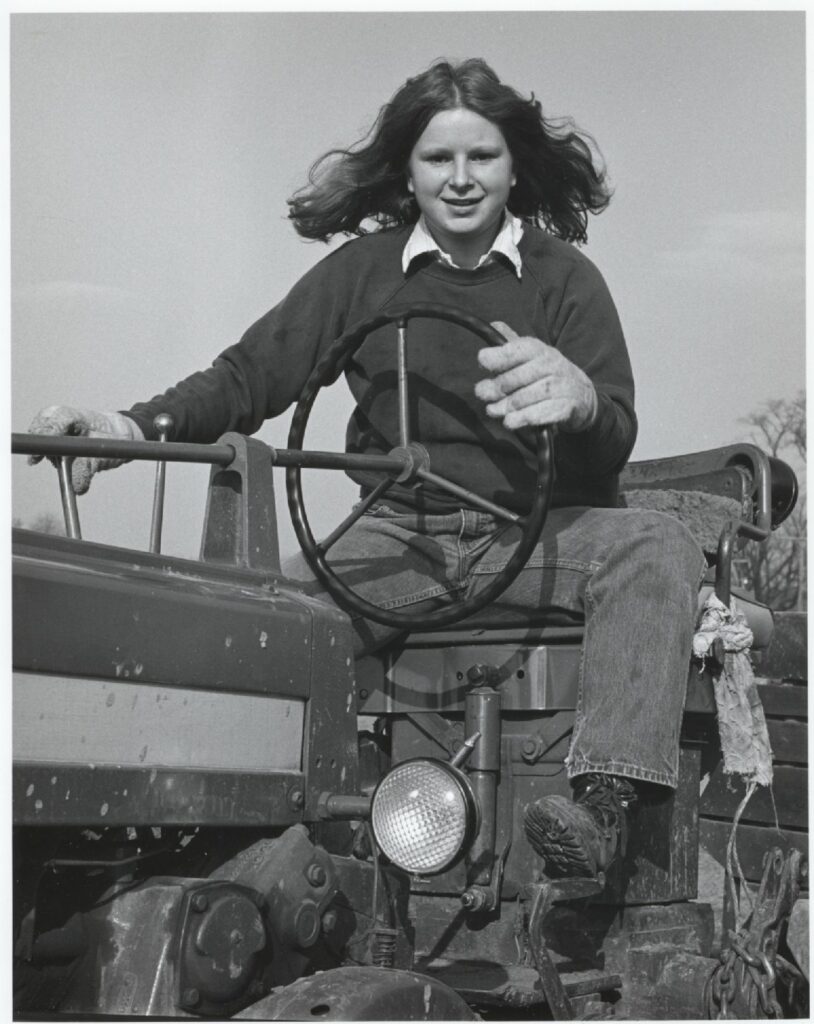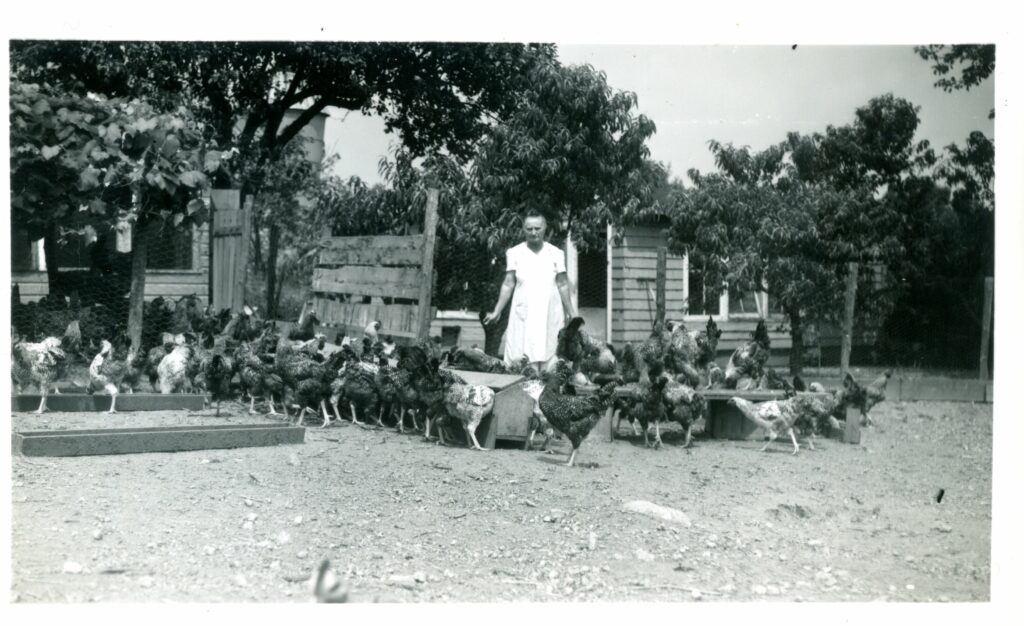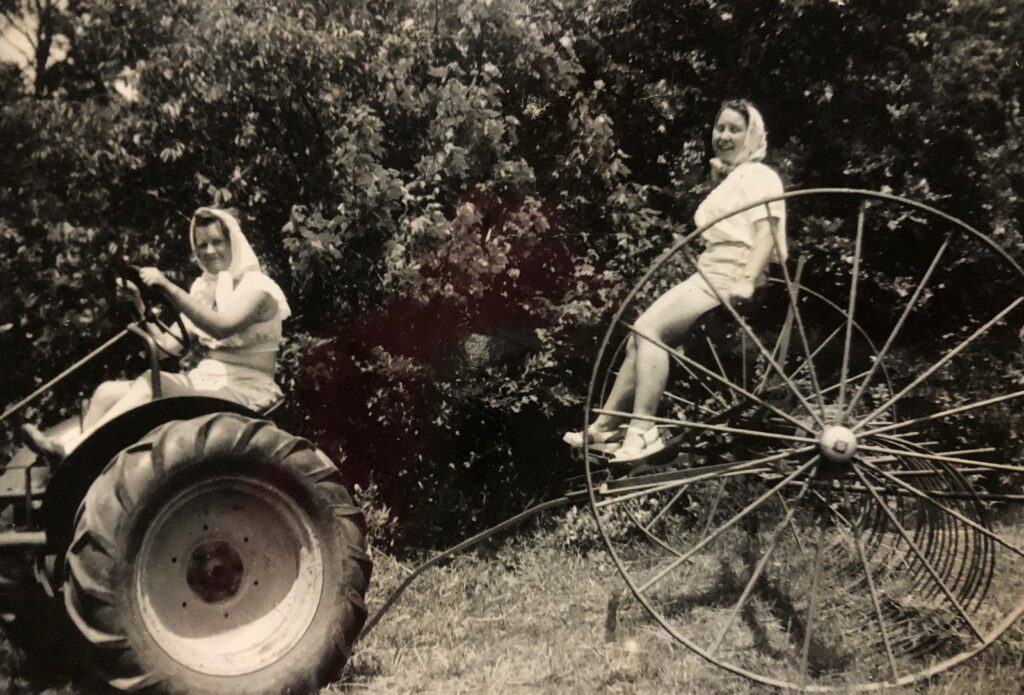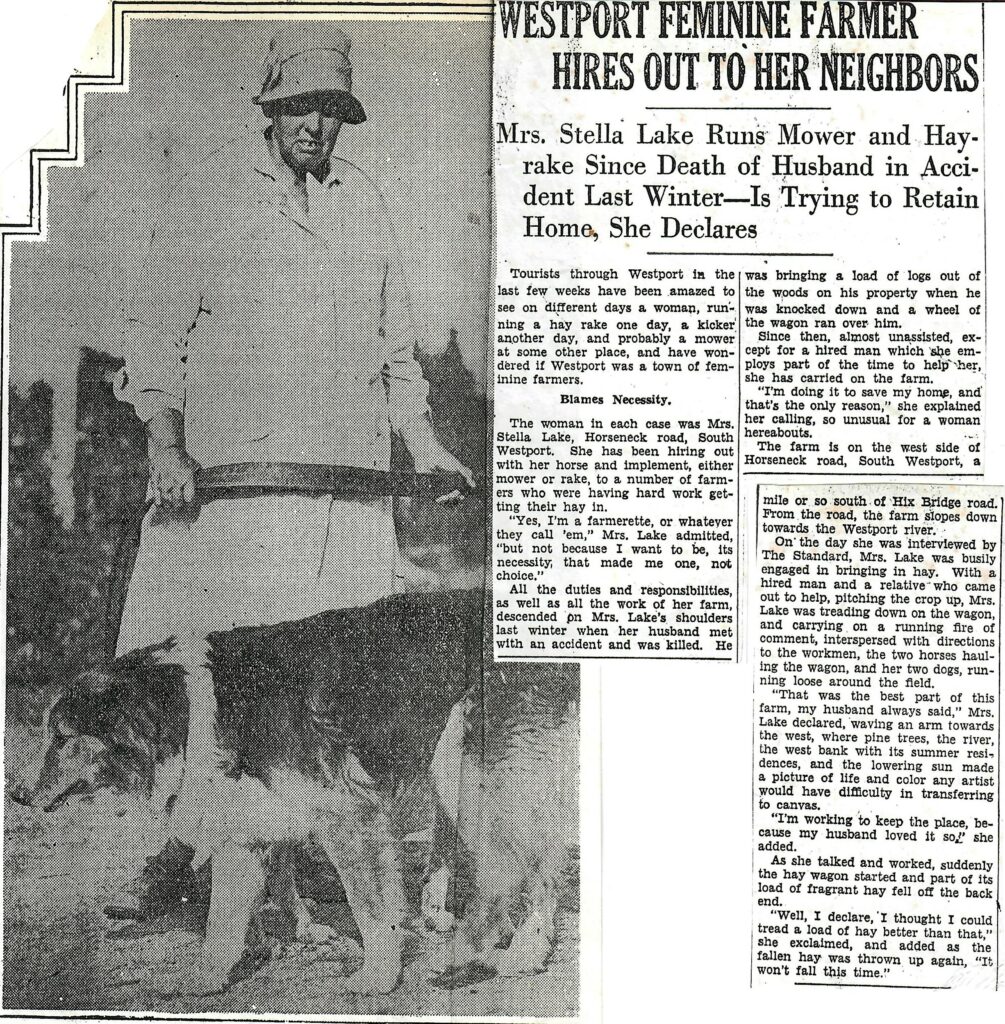Women on the Farm
Posted on May 30, 2025 by Jenny ONeill

April Sampson
The role of women in the 20th century on the farm varied. On some farms, tasks were clearly delineated — men worked outside and the women cared for the household:
Charlie Costa on his grandmother
“When my grandfather was working on the farm, she would be washing clothes, hauling water, heating the irons on the stove to iron the clothes and taking in washings and doing all that sort of thing.”
 Women took care of feeding chickens and gathering eggs. They were responsible for harvest and preservation of vegetables/fruits from the garden.
Women took care of feeding chickens and gathering eggs. They were responsible for harvest and preservation of vegetables/fruits from the garden.
However, in contrast to this portrayal of a restricted role for women, there is a striking number of images depicting women at work on the farm, driving tractors or wielding tools.
Alice Blossom
“I used to drive horseback to hoist the hay. I used to top turnips and I used to ride the hay rake. I didn’t cut the hay. We had a vegetable garden. I’d go out and pick peas for lunch. Mother canned a lot of things and we had a lot of cows, sometimes the kittens would come around and you’d squirt the milk. They’d open their mouths and they’d catch it. I got kicked one time doing that. The cow didn’t like me doing that.”

Alice Wordell Sampson
Women have played a special role at the Sampson farm. Alice Wordell Sampson (born 1877) inherited the farm from her father. This energetic and forward-thinking woman became “the brains of the business,” according to her sons. Facing war-time labor shortages for milking, she transitioned the farm from dairy to potato cultivation.
Milicent Tuckerman
Milicent Tuckerman was a very successful breeder of thoroughbred horses. She was recognized as New England Thoroughbred breeder of the Year for three years with “Rise Jim”, who held the record as the highest winning horse in New England for many years.
Stella Brightman Lake: Westport’s Feminine Farmer

WESTPORT FEMININE FARMER HIRES OUT TO HER NEIGHBORS
Mrs. Stella Lake runs mover and hayride since death of husband in accident last winter – is trying to retain home, she declares.
Tourists through Westport in the last few weeks have been amazed to see on different days a woman running a hay rake one day, a kicker another day and probably a mower at some other place and have wondered if Westport was a town of feminine farmers.
BLAMES NECESSITY
The woman in each case was Mrs. Stella Lake, Horseneck Road, South Westport. She has been hiring out with her horse and implement, either mower or rake, to a number of farmers who were having hard work getting their hay in.
“Yes, I’m a farmerette, or whatever they call ‘em,” Mrs. Lake admitted, ”but not because I want to be its necessity that made me one, not choice.
All the duties and responsibilities, as well as all the work of her farm, descended on Mrs. Lake’s shoulders last winter when her husband met with an accident and was killed. He was bringing a load of logs out of the woods on his property when he was knocked down and a wheel of the wagon ran over him.
Since then, almost unassisted, except for a hired man which she employs part of the time to help her, she has carried on the farm.
I’m doing it to save my home and that’s only reason”, she explained her calling so unusual for a woman hereabouts.
The farm is on the west side of Horseneck Road, South Westport, a mile or so south of Hix Bridge road. From the road, this farm slopes down towards the Westport river.
On the day she was interviewed by The Standard, Mrs. Lake was busily engaged in bringing in hay. With a hired man and a relative who came out to help, pitching the crop up, Mrs. Lake was treading down on the wagon and carrying on a running fire of comment interspersed with directions to the workmen, her two horses hauling the wagon, and her two dogs running loose around the field.
“That was the best part of this farm, my husband always said,” Mrs. Lake declared, waving an arm towards the west, where pine trees, the river, the west bank with its summer residences, and the lowering sun made a picture of life and color any artist would have difficulty in transferring to canvas.
I’m working to keep the place, because my husband love it so” she added.
As she talked and worked suddenly the hay wagon started and part of its load of fragrant hay fell of the back end.
Well, I declare “I thought I could tread a load of hay better than that” she exclaimed, and added as the fallen hay was thrown up again, “It won’t fall this time.
Image: Stella Lake treading down the hay on a wagon

Stella Brightman
Elvira Smith
“There was always a lot of work to be done on the farm. I often worked with my Pa outside, cutting and storing hay, cutting and lugging green feed for the calves and heifers, planting potatoes, and beets, etc. It was also my job to take the horses and cows to the spring brook for a drink and drive them back to their pasture or to their barn. If you could not find me out in the fields with my father, you could find me feeding the chickens, collecting their eggs, or shutting them up in their hen coops at night.”
“Esther, my younger sister, however, worked with my mother in the house cooking, cleaning, and canning, etc. Esther also did a lot of needlework, and with my mother, made most of our clothes. We were very frugal. For example we would use the cotton from the flour sacks to make our aprons. I remember that instead of throwing our old sweaters away, we would unravel the yarn, then wash and clean it to take out the wrinkles. I still have two vests that I knitted from old sweaters. My mother had the expression “Use it up, wear it out, make it do, or do without”. We lived by that slogan then and I still do now.”
